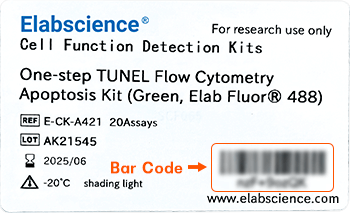CD146/MCAM Polyclonal Antibody (D-AB-10421L)

For research use only.
| Verified Samples |
Verified Samples in WB: Hela, A375 |
| Dilution | WB 1:500-1:1000 |
| Isotype | IgG |
| Host | Rabbit |
| Reactivity | Human |
| Applications | WB |
| Clonality | Polyclonal |
| Immunogen | Recombinant Human CD146/MCAM protein expressed by E.coli |
| Abbre | CD146/MCAM |
| Synonyms | MCAM, MUC18, CD146 |
| Swissprot | |
| Calculated MW | 71 kDa |
| Observed MW |
120 kDa
The actual band is not consistent with the expectation.
Western blotting is a method for detecting a certain protein in a complex sample based on the specific binding of antigen and antibody. Different proteins can be divided into bands based on different mobility rates. The mobility is affected by many factors, which may cause the observed band size to be inconsistent with the expected size. The common factors include: 1. Post-translational modifications: For example, modifications such as glycosylation, phosphorylation, methylation, and acetylation will increase the molecular weight of the protein. 2. Splicing variants: Different expression patterns of various mRNA splicing bodies may produce proteins of different sizes. 3. Post-translational cleavage: Many proteins are first synthesized into precursor proteins and then cleaved to form active forms, such as COL1A1. 4. Relative charge: the composition of amino acids (the proportion of charged amino acids and uncharged amino acids). 5. Formation of multimers: For example, in protein dimer, strong interactions between proteins can cause the bands to be larger. However, the use of reducing conditions can usually avoid the formation of multimers. If a protein in a sample has different modified forms at the same time, multiple bands may be detected on the membrane. |
| Concentration | 1 mg/mL |
| Buffer | PBS with 0.05% Proclin300, 1% protective protein and 50% glycerol, pH7.4 |
| Purification Method | Antigen Affinity Purification |
| Research Areas | Cancer, Cardiovascular, Immunology, Signal Transduction, Stem Cells |
| Conjugation | Unconjugated |
| Storage | Store at -20°C Valid for 12 months. Avoid freeze / thaw cycles. |
| Shipping | The product is shipped with ice pack,upon receipt,store it immediately at the temperature recommended. |
| background | CD146,also known as melanoma cell adhesion molecule (MCAM) or MUC18,originally identified as a biomarker of melanoma progression,is a transmembrane glycoprotein of 113-130 kDa,belonging to the immunoglobulin (Ig) superfamily. Structurally,it consists of five Ig domains,a transmembrane domain,and a cytoplasmic region. In normal adult tissue,CD146 is primarily expressed by vascular endothelium and smooth muscle. CD146 is a key cell adhesion protein in vascular endothelial cell activity and angiogenesis,and has been used as marker of circulating endothelium cells (CECs). In addition to the membrane-anchored form of CD146,a soluble form of CD146 (sCD146,105 kDa) has also been found in human plasma and in the supernatant of cultured human endothelial cells. This antibody detects a band at approximately 120 kDa that corresponds to the molecular weight of glycosylated CD146. Treatment of lysates of HepG2 cells and L02 cells with PNGase F,which removes oligosaccharides from N-linked glycoproteins,led to a down-shift of the detected band. |
Other Clones
{{antibodyDetailsPage.numTotal}} Results
-
{{item.title}}
Citations ({{item.publications_count}}) Manual MSDS
Cat.No.:{{item.cat}}
{{index}} {{goods_show_value}}
Other Formats
{{formatDetailsPage.numTotal}} Results
Unconjugated
-
{{item.title}}
Citations ({{item.publications_count}}) Manual MSDS
Cat.No.:{{item.cat}}
{{index}} {{goods_show_value}}
-
IF:{{item.impact}}
Journal:{{item.journal}} ({{item.year}})
DOI:{{item.doi}}Reactivity:{{item.species}}
Sample Type:{{item.sample_type}}
-
Q{{(FAQpage.currentPage - 1)*pageSize+index+1}}:{{item.name}}





